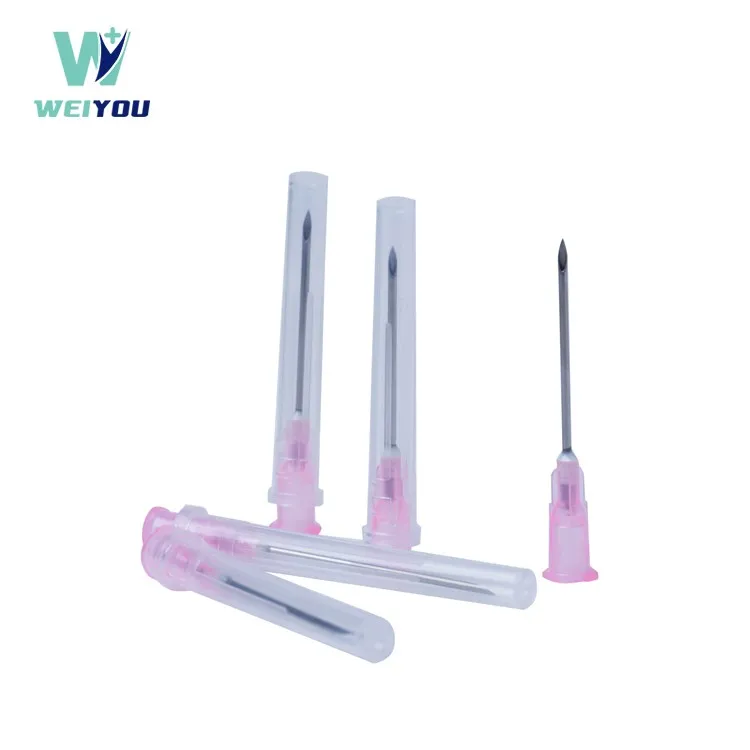- English
- Español
- Português
- русский
- Français
- 日本語
- Deutsch
- tiếng Việt
- Italiano
- Nederlands
- ภาษาไทย
- Polski
- 한국어
- Svenska
- magyar
- Malay
- বাংলা ভাষার
- Dansk
- Suomi
- हिन्दी
- Pilipino
- Türkçe
- Gaeilge
- العربية
- Indonesia
- Norsk
- تمل
- český
- ελληνικά
- український
- Javanese
- فارسی
- தமிழ்
- తెలుగు
- नेपाली
- Burmese
- български
- ລາວ
- Latine
- Қазақша
- Euskal
- Azərbaycan
- Slovenský jazyk
- Македонски
- Lietuvos
- Eesti Keel
- Română
- Slovenski
- मराठी
- Srpski језик
What kind of needles do vets use?
2024-09-11
Veterinarians use a variety of needles depending on the type of procedure, the size and species of the animal, and the substance being injected or drawn. Here are the most common types of needles used by vets:

1. Hypodermic Needles
- Purpose: Used for injections (vaccinations, medications) and blood draws.
- Sizes: Vary in gauge (thickness) and length.
- Gauge: Common gauges range from 18 to 25. Larger numbers correspond to thinner needles (e.g., a 25-gauge needle is thinner than an 18-gauge).
- Length: Typically between ½ inch and 1½ inches, with longer needles used for deeper injections or larger animals.
- Material: Stainless steel with a plastic or metal hub for attaching to a syringe.
2. Needle Gauge Sizes by Animal Size
- Small Animals (Cats, Small Dogs, Birds):
- Thin needles, typically 22-25 gauge, are used for injections of medications or vaccines.
- Medium to Large Dogs:
- Needles in the range of 20-22 gauge are used for injections or blood draws.
- Large Animals (Horses, Cattle, Livestock):
- Thicker needles, usually 16-20 gauge, are used to ensure medication can be delivered effectively or for collecting large volumes of blood.
3. Spinal or Epidural Needles
- Purpose: Used for administering anesthesia in specific procedures.
- Needle Type: These needles are longer and may have a larger gauge, depending on the size of the animal. They are designed to access the spinal canal for injections during surgeries or pain management.
4. Butterfly Needles
- Purpose: Used for intravenous injections or blood draws, especially in smaller animals or when repeated injections are necessary.
- Design: Butterfly needles are short and thin, with a flexible "wing" attachment for precise control. They come in gauges similar to hypodermic needles, usually 21-25 gauge.
5. Catheter Needles
- Purpose: Used for placing intravenous (IV) catheters in animals for fluid administration, medication, or anesthesia.
- Design: These needles are used to insert a catheter into a vein, which is then left in place while the needle is removed.
- Sizes: Typically 18-22 gauge, depending on the size of the animal.
6. Biopsy Needles
- Purpose: Used for collecting tissue samples from animals for diagnostic purposes.
- Design: These are larger and thicker than typical needles, designed to cut and collect tissue samples.
Factors That Affect Needle Choice:
- Animal Size: Smaller animals require thinner needles, while larger animals can tolerate thicker ones.
- Substance Viscosity: Thicker substances like certain medications or fluids require larger gauges (e.g., 18-20 gauge) to flow through the needle.
- Injection Site: Intramuscular injections may require longer, thicker needles, while subcutaneous injections use shorter, thinner needles.
Veterinarians choose the needle type based on the procedure, animal species, and the substance being administered or collected to ensure safety, efficiency, and comfort for the animal.
Weiyou® manufacture and supply veterinary needles which is very high quality. Visit our website at https://www.nbweiyou.com to learn more about our products. For inquiries, you can reach us at dario@nbweiyou.com.



